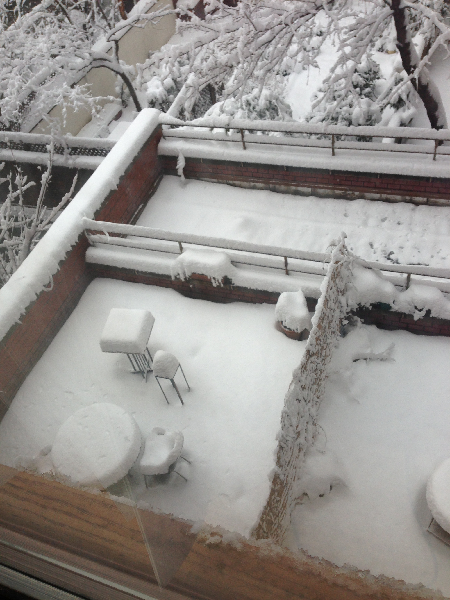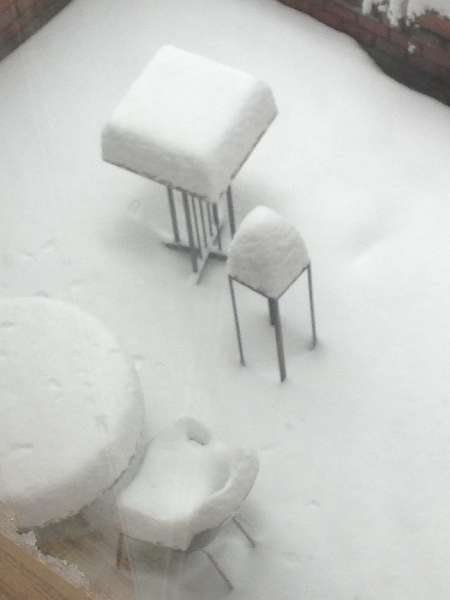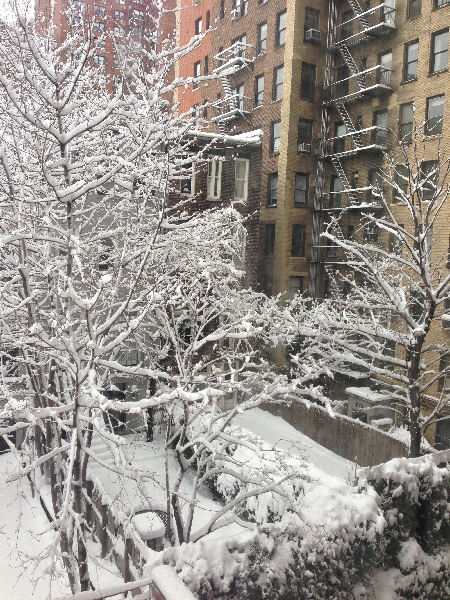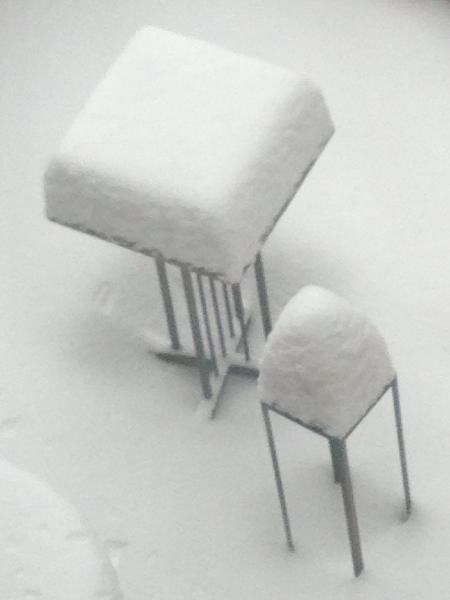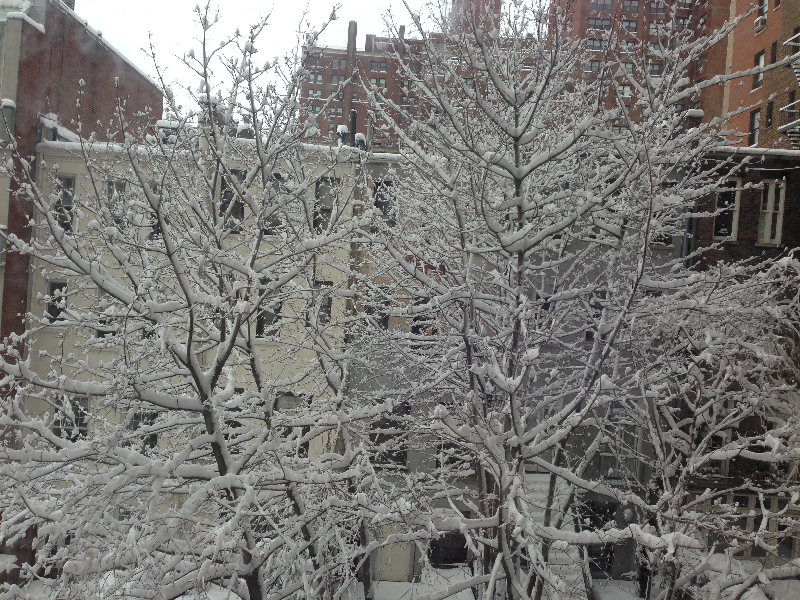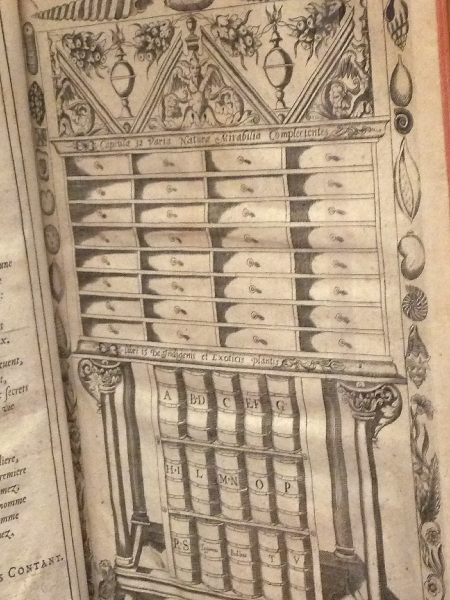My friend Cathie has been working very hard, especially since Newtown, advocating for gun control. She told me about the Artists in Support of Gun Control, a Flash Mob performance piece at Times Square today. My friend Penny, her daughter, and Sasha’s friends from Boston participated.
While waiting for the event to start, I talked with Paula and her daughter Rosalee from Long Island. They wrote the names of gun violence victims they were honoring with the performance on their hands.
I was already so moved. In this slide show, you can also see the performers gathering, getting ready.
At 1:08 p.m., the performers raised their hands, in silence. Then Lorin Latarro, the choreographer, gave the signal.
Some performers sank to the ground, while others drew chalk outlines of their fallen bodies on the sidewalk.
The fallen rose slowly, and the partner inscribed the chalked body remains with a word, a statistic, or in the case of Paula and Rosalee, a name.
Here are a lot more images of the event.
When all were complete, the performers moved away, leaving the remains like a crime scene. Here are some images of the scene.
Seeing the chalked outlines was really powerful for me–maybe more so than the actual performance. I stood and looked for several moments, watching as two children re-entered the space to add some drawings to one of the body outlines.
Lauren talked to the press, saying “if even one mind was changed” then the event was a success.
And the event was officially over. Penny and Sasha debriefed their experience, and here are Sasha’s comments.
Sasha’s Reactions to the Flash Mob
(best if you open the video in a new tab)
Here are Sasha’s friends Connie, Chloe, and Gaby posing by their drawings.
This slide show commemorates their experience.
The whole event took maybe 5 minutes, but it stopped Times Square for about that long. Quieted it down. Since the performance took place in Duffy Square. You know the place: in front of the Half Price Ticket Booth, where tourists do the post-modern, self-absorbed thing of waving at a camera that is projecting their image on a huge screen. So that moment of quiet is really something. As Lauren said, maybe a mind was changed, too.


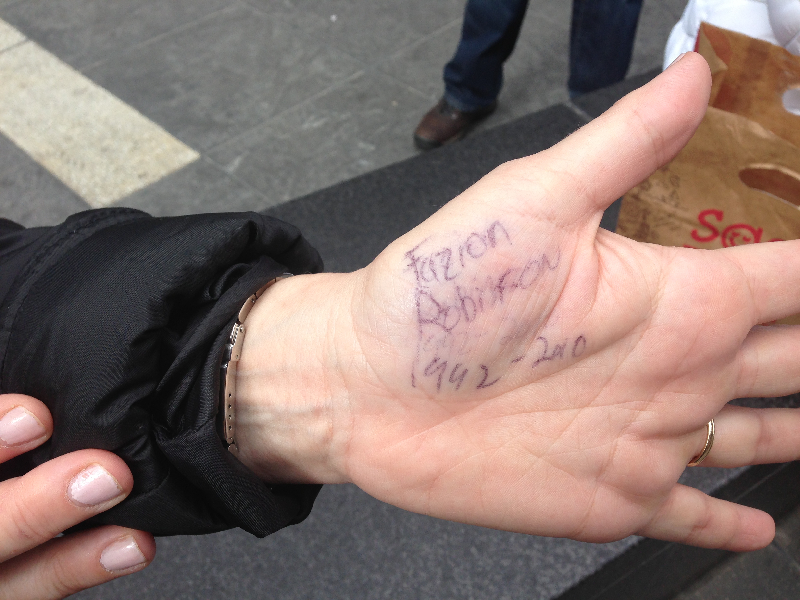
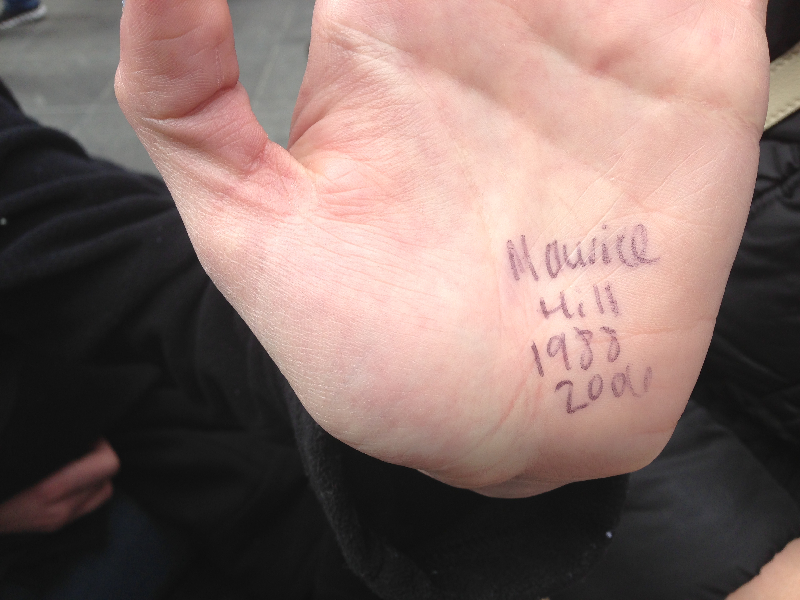
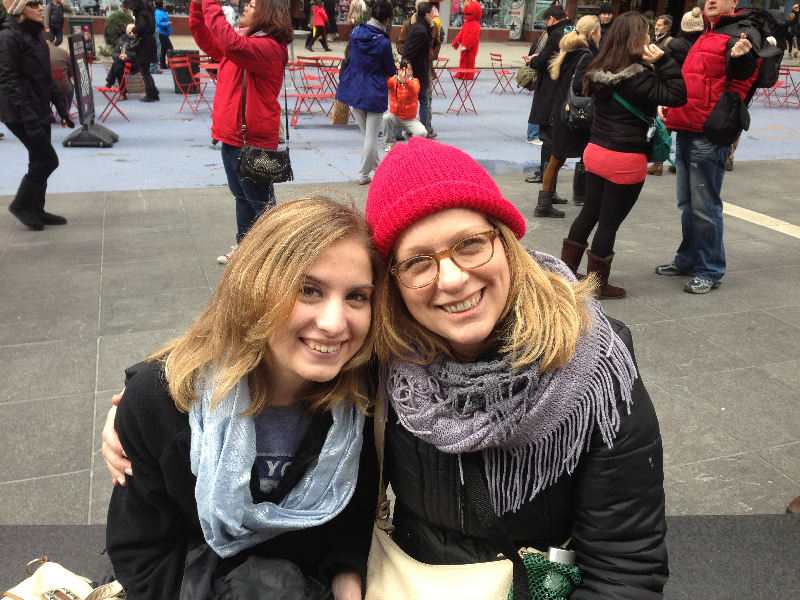
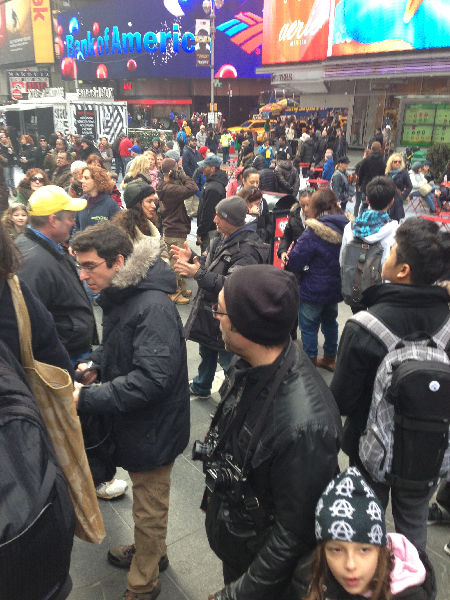



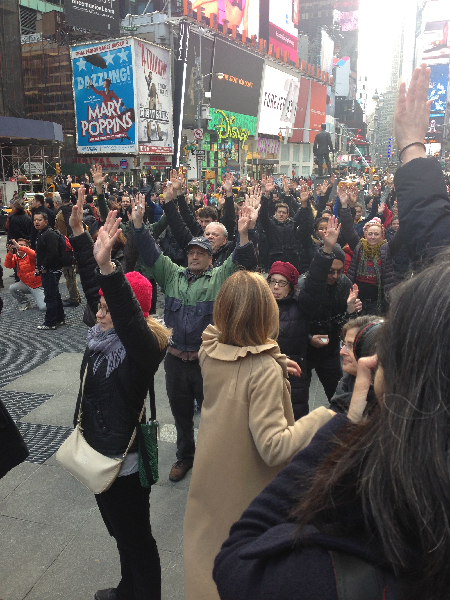
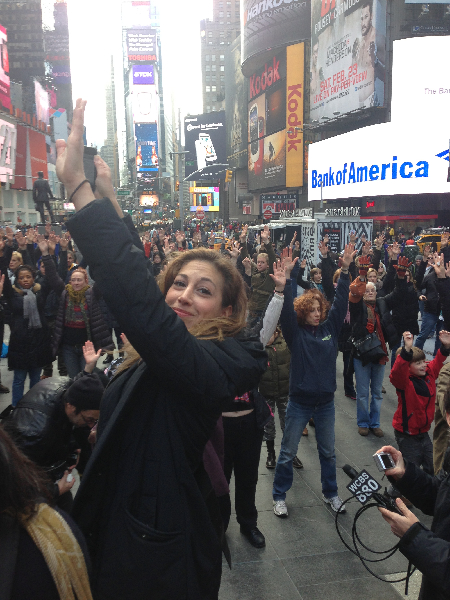
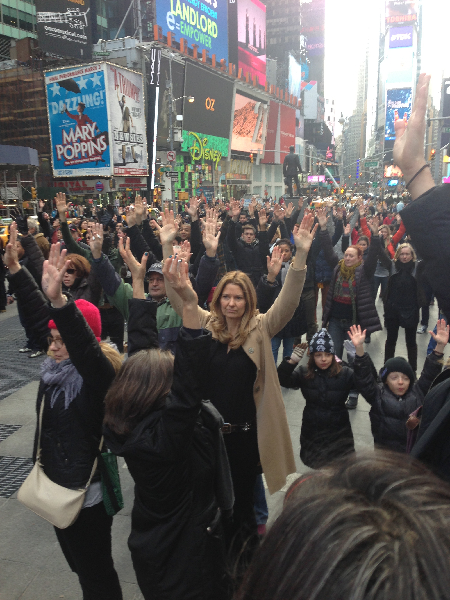
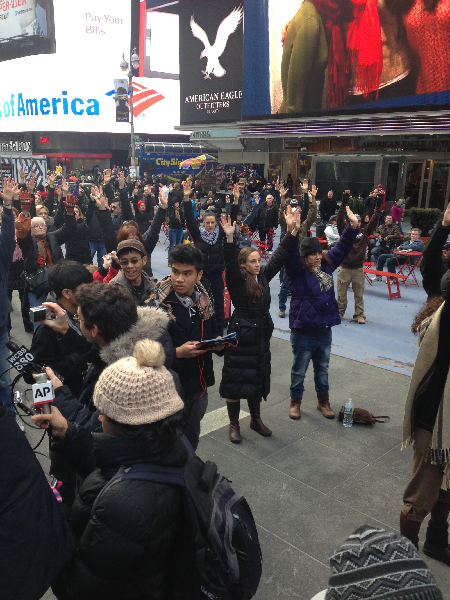
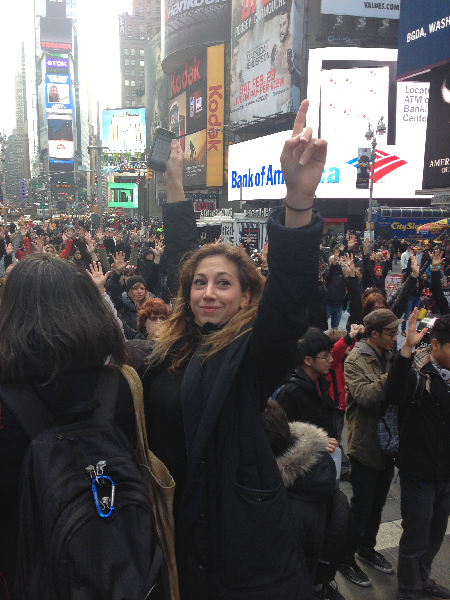
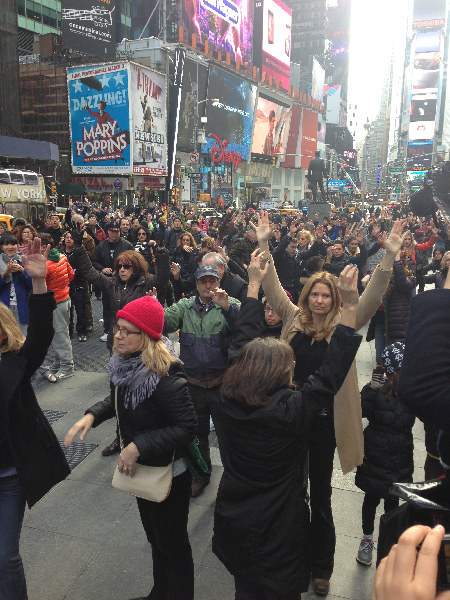
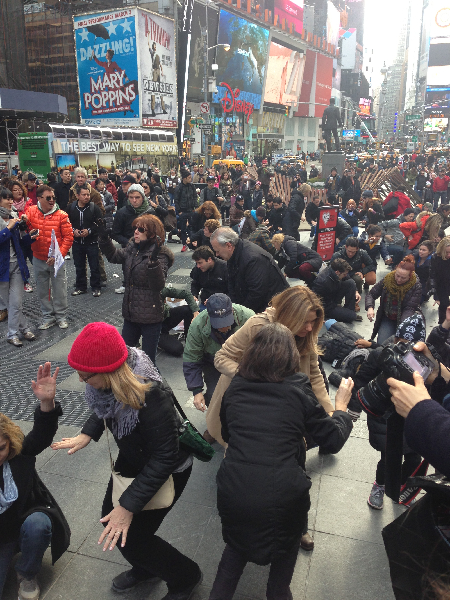
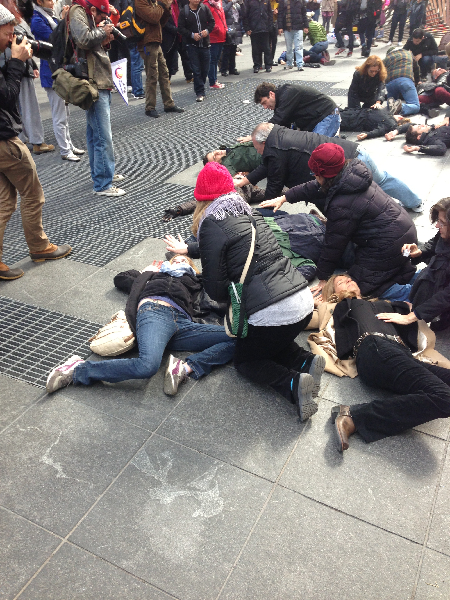
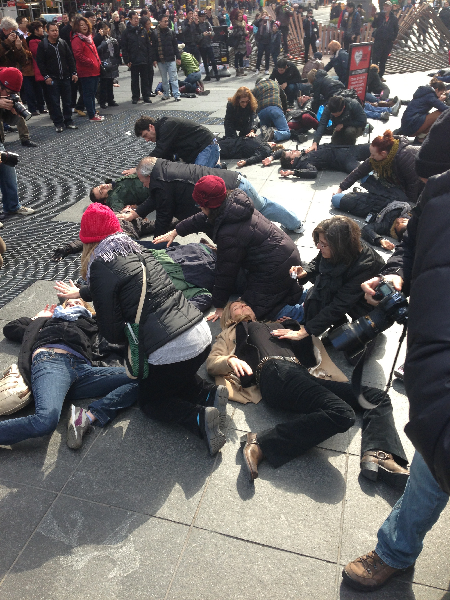
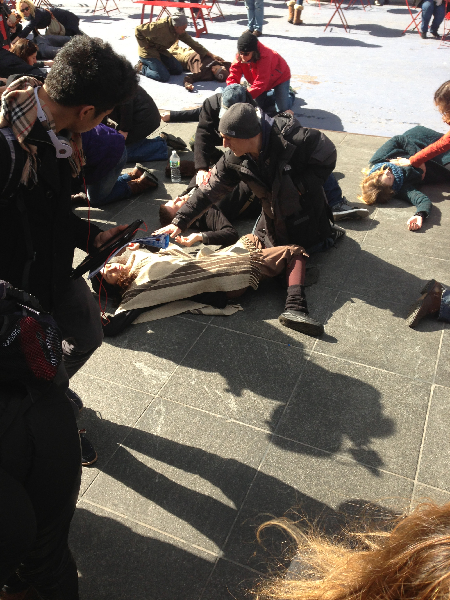
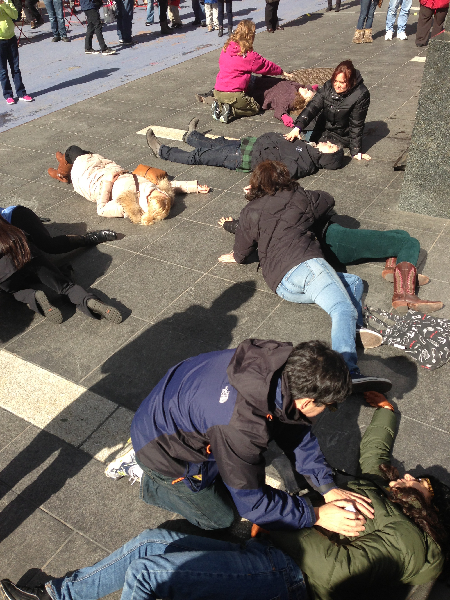
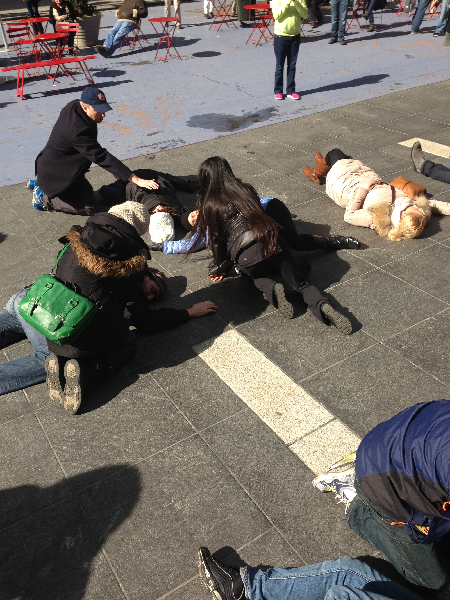
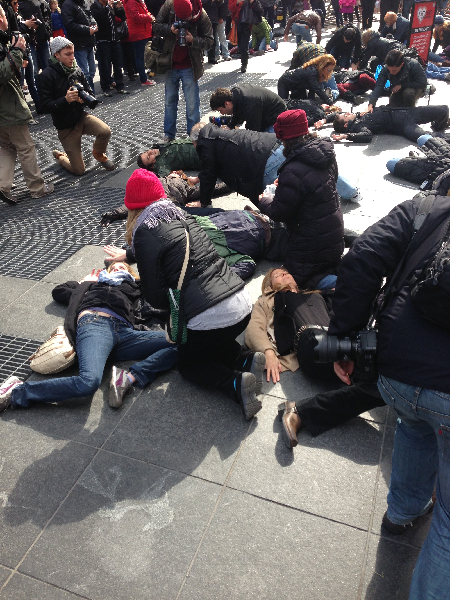
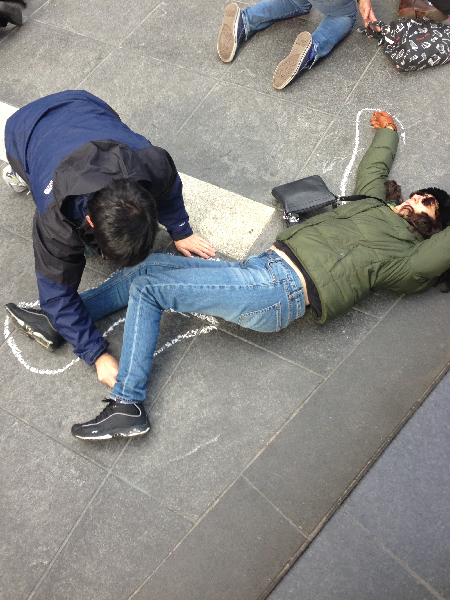
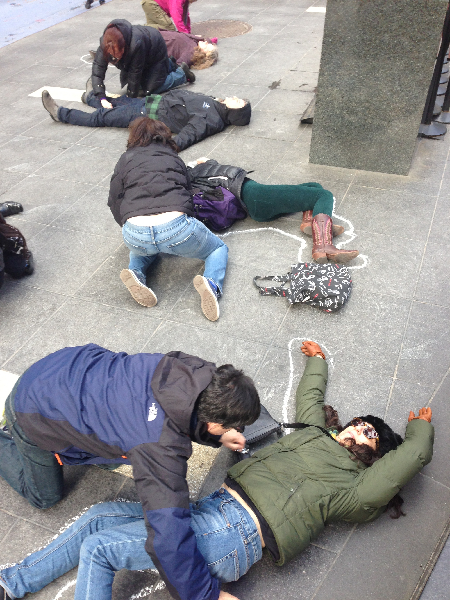
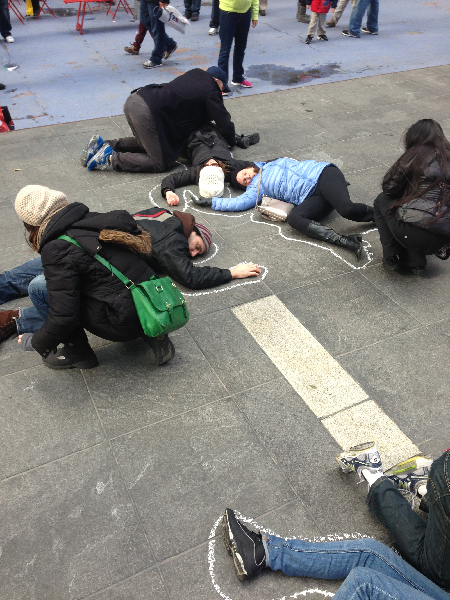
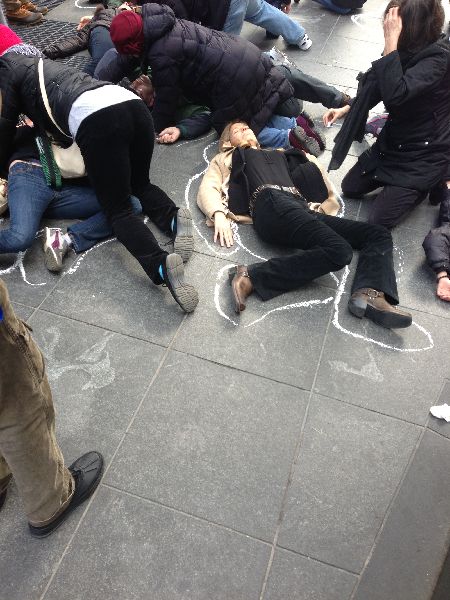
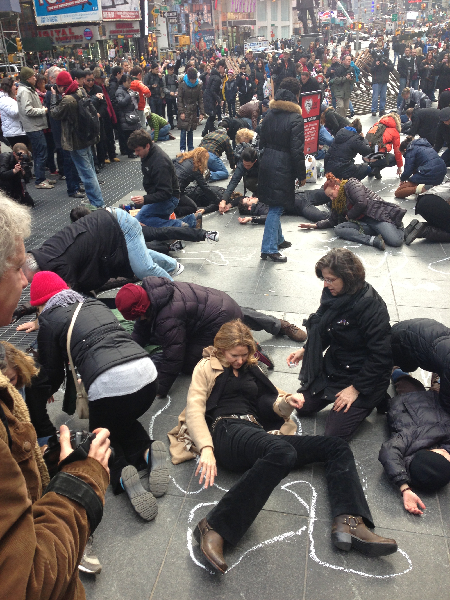
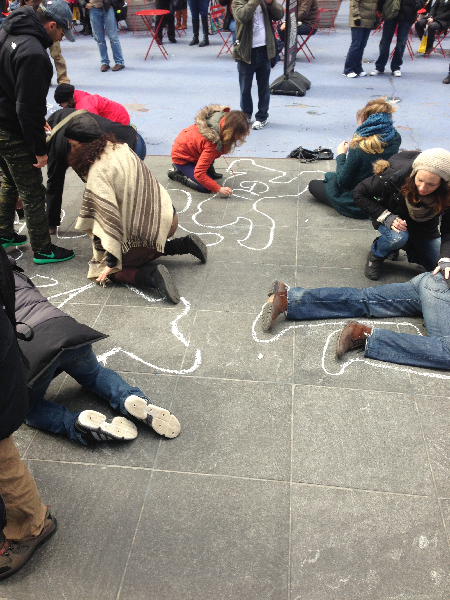
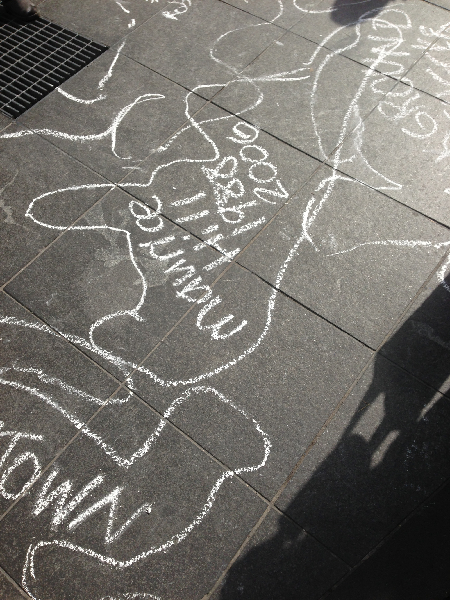
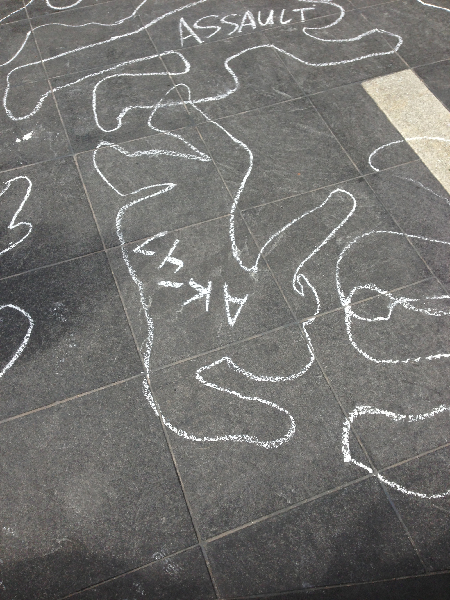
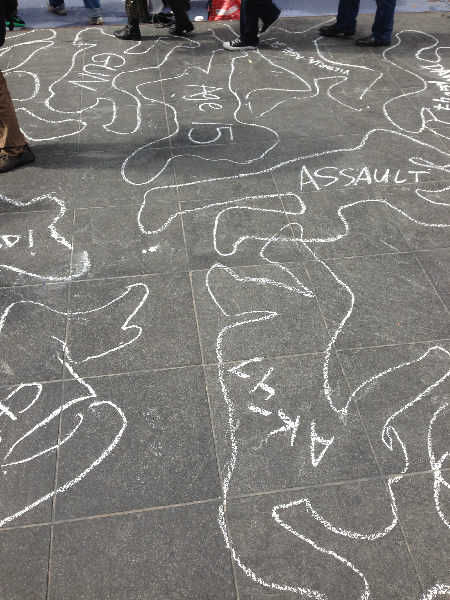
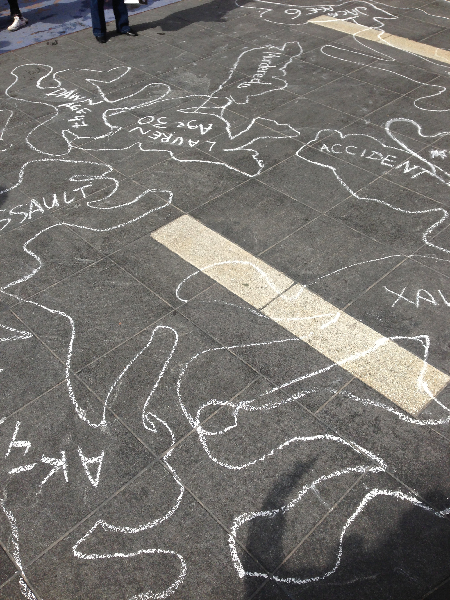
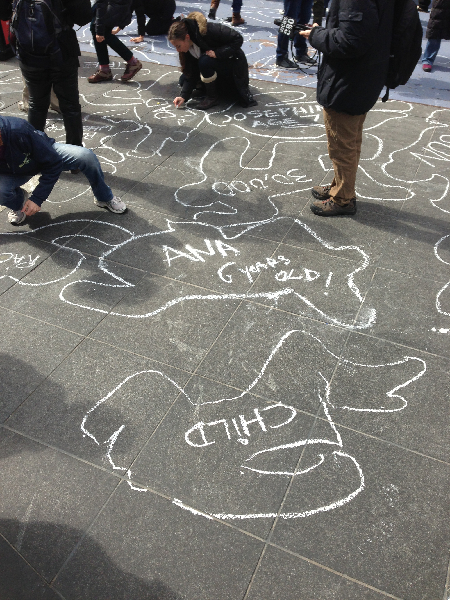
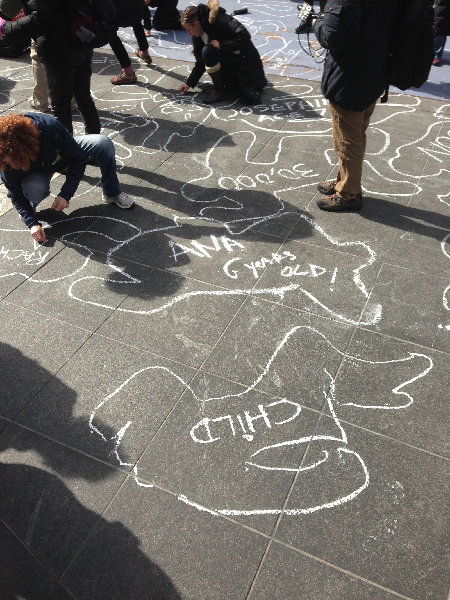
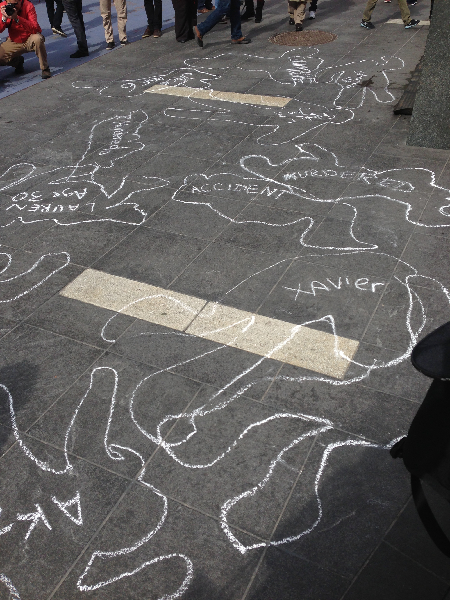
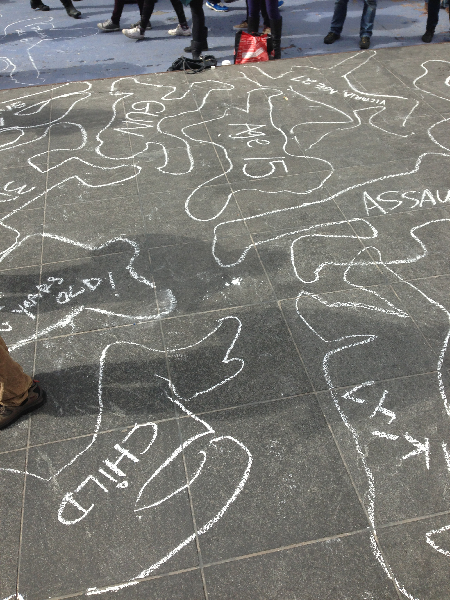
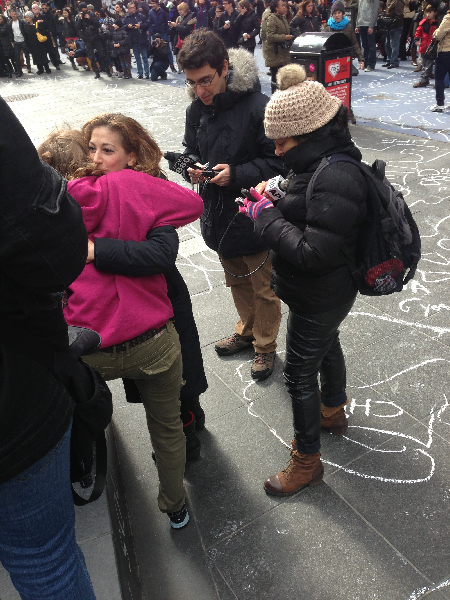
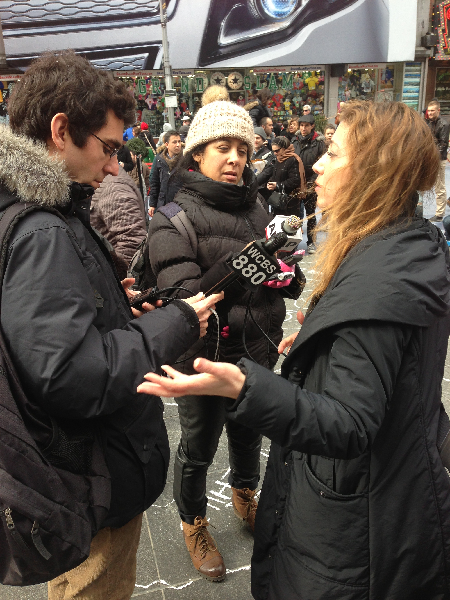
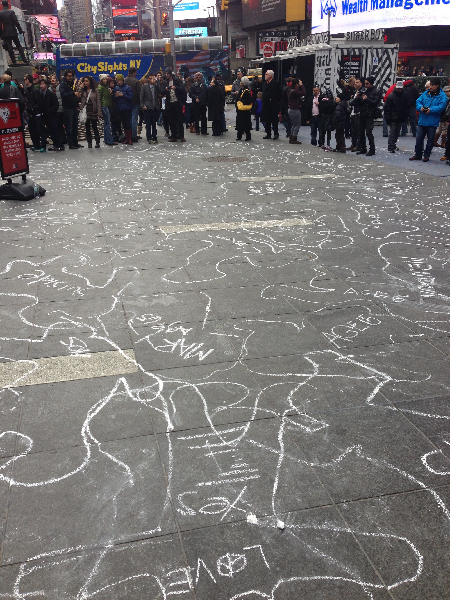
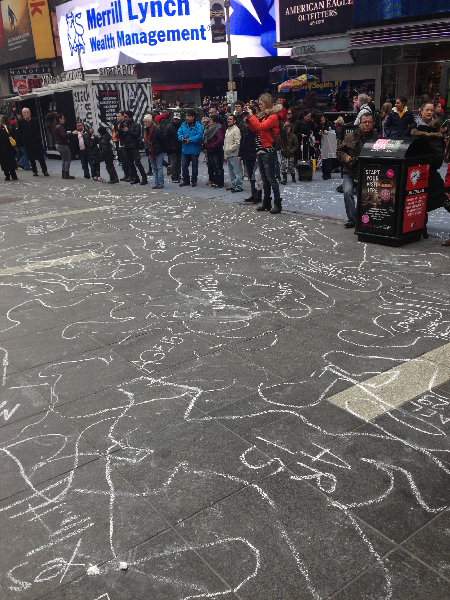
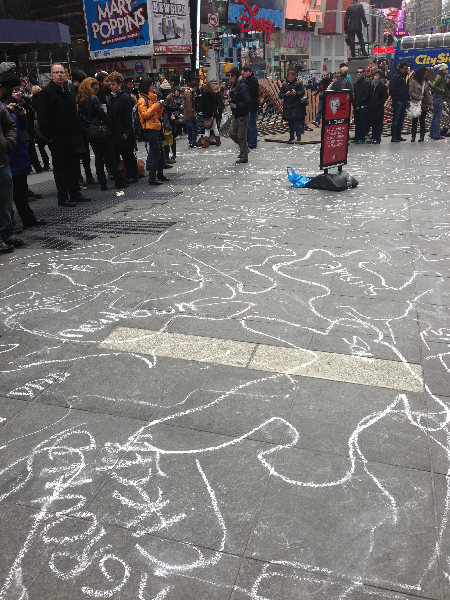
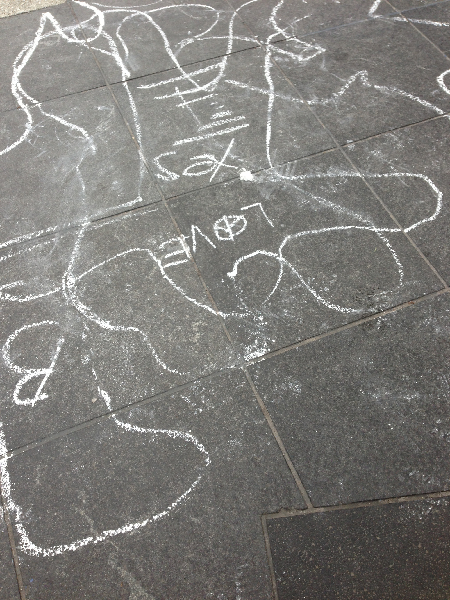
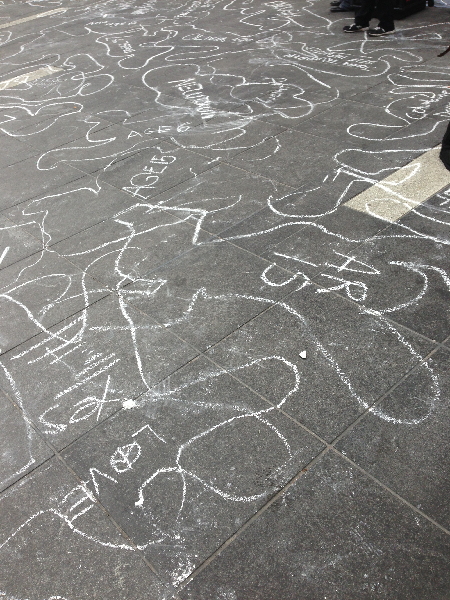
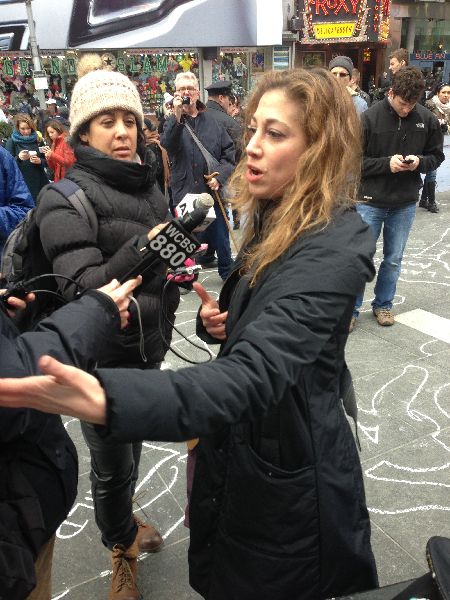
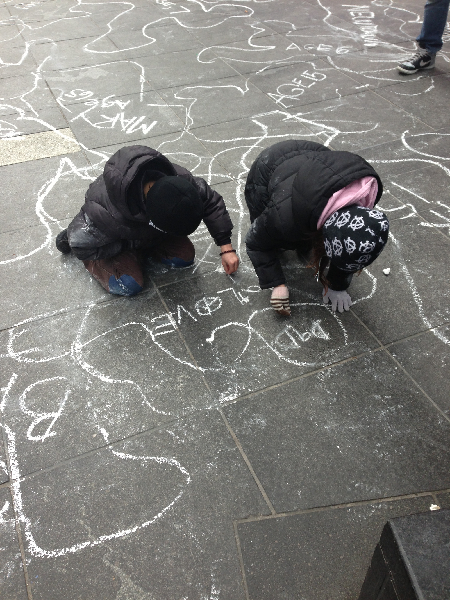
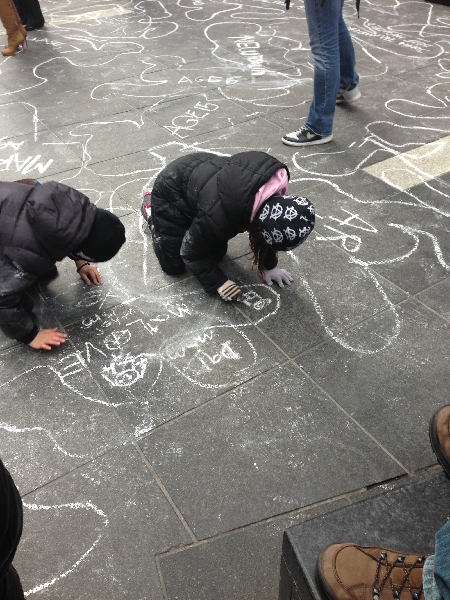


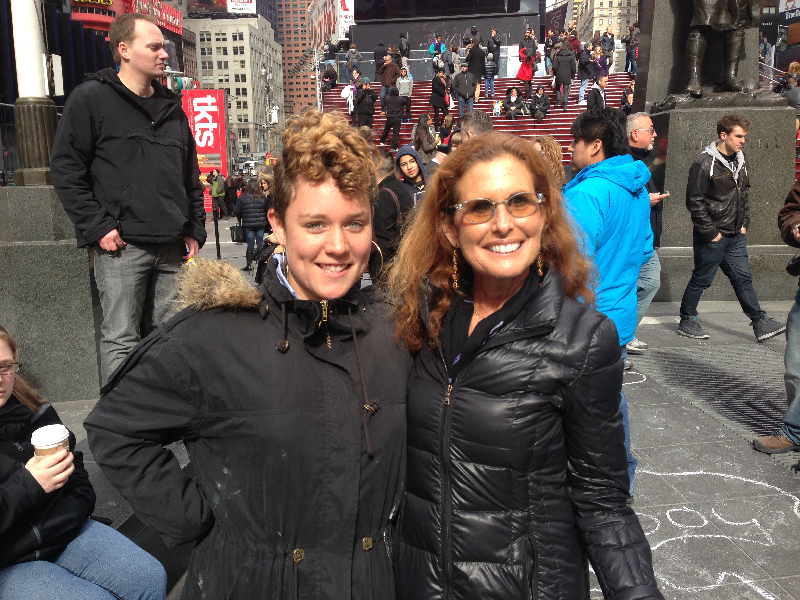
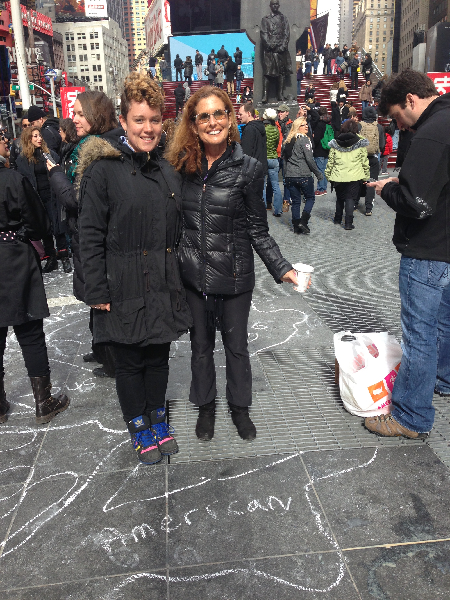
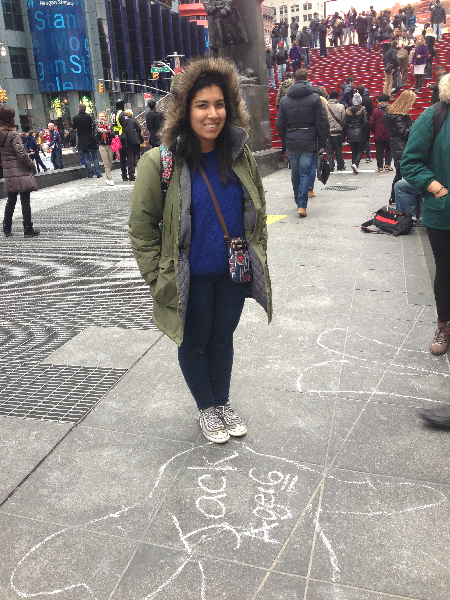
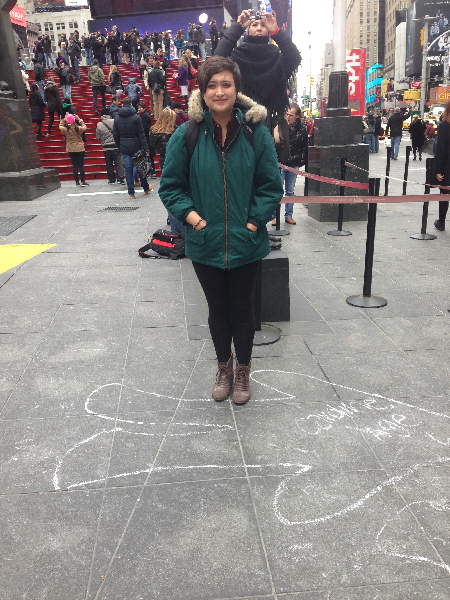
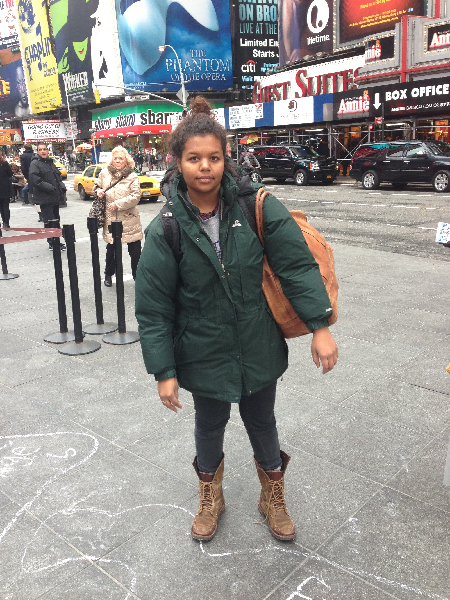
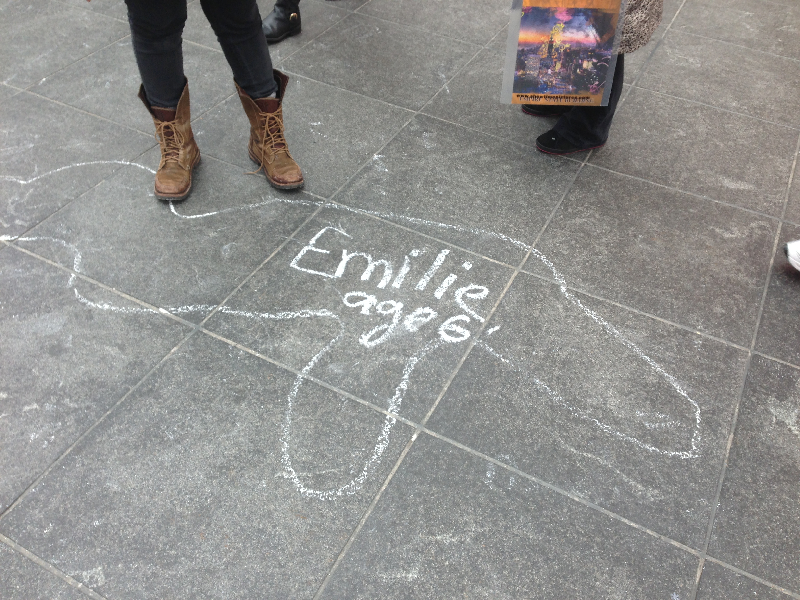
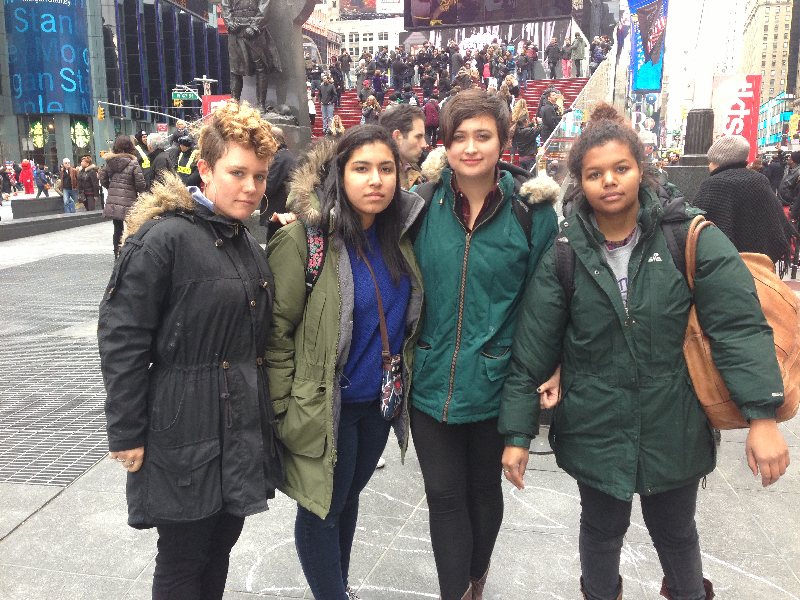




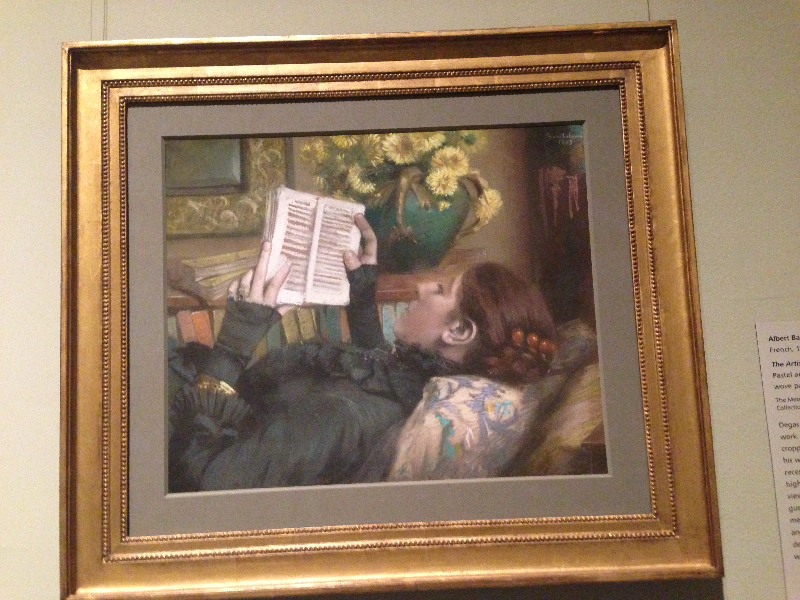
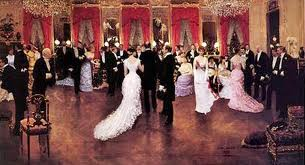
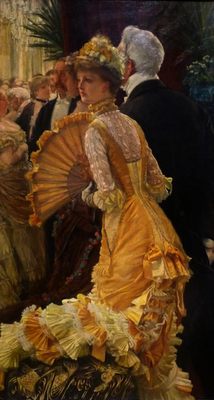



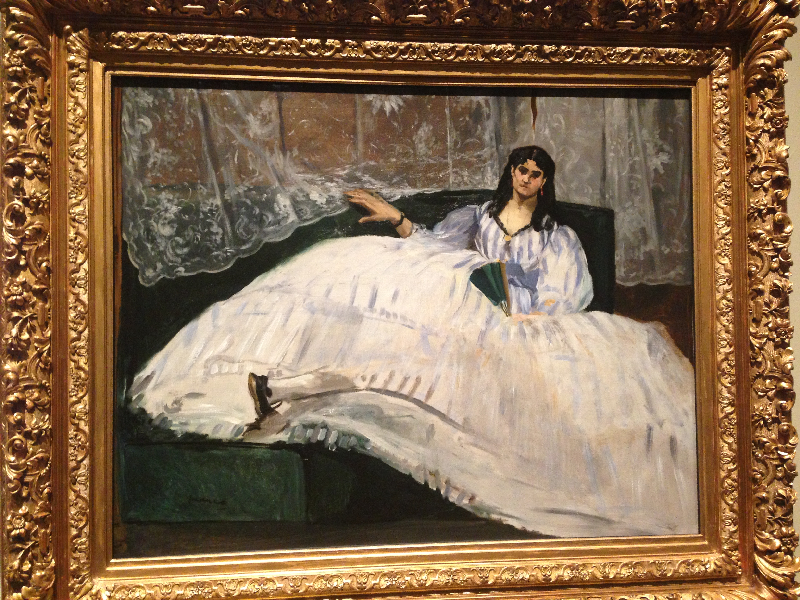
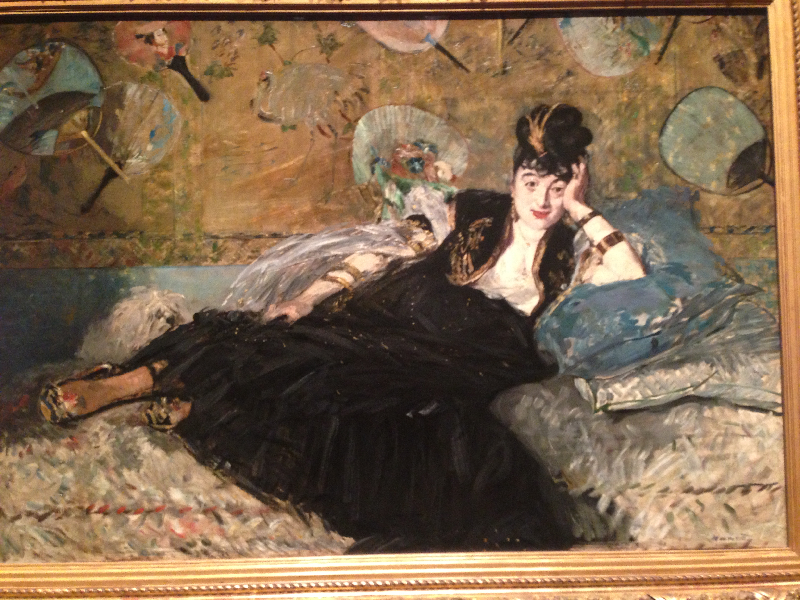
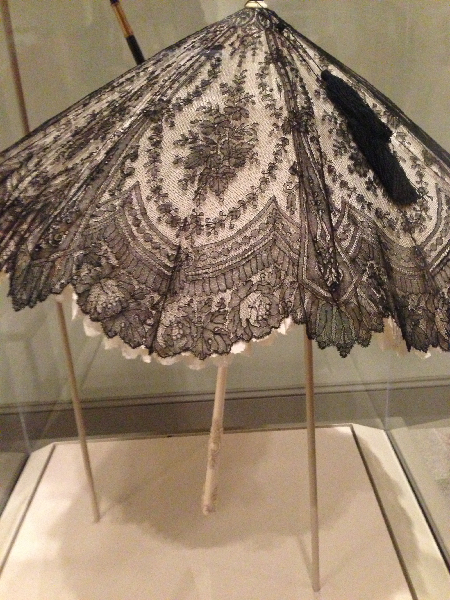
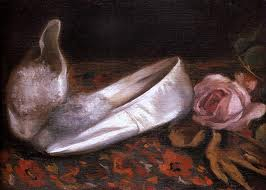
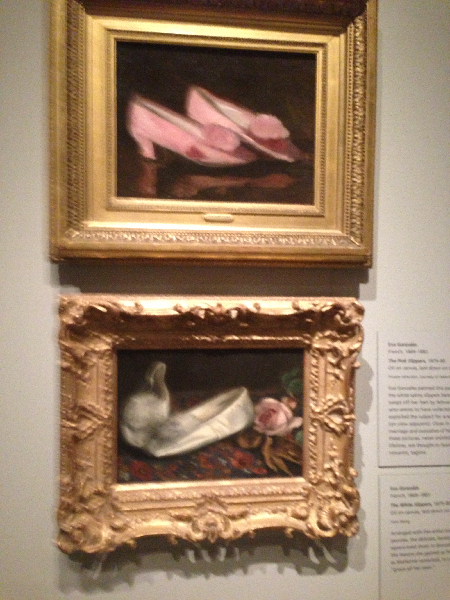









 . Over the next 100 or so years, the basement retail space changed hands many times–Kosher butchers, underwear factory, an auction house, etc. Here’s a picture of the auction house in action. Look how narrow the space is and how many people, well men, are crammed in.
. Over the next 100 or so years, the basement retail space changed hands many times–Kosher butchers, underwear factory, an auction house, etc. Here’s a picture of the auction house in action. Look how narrow the space is and how many people, well men, are crammed in.








